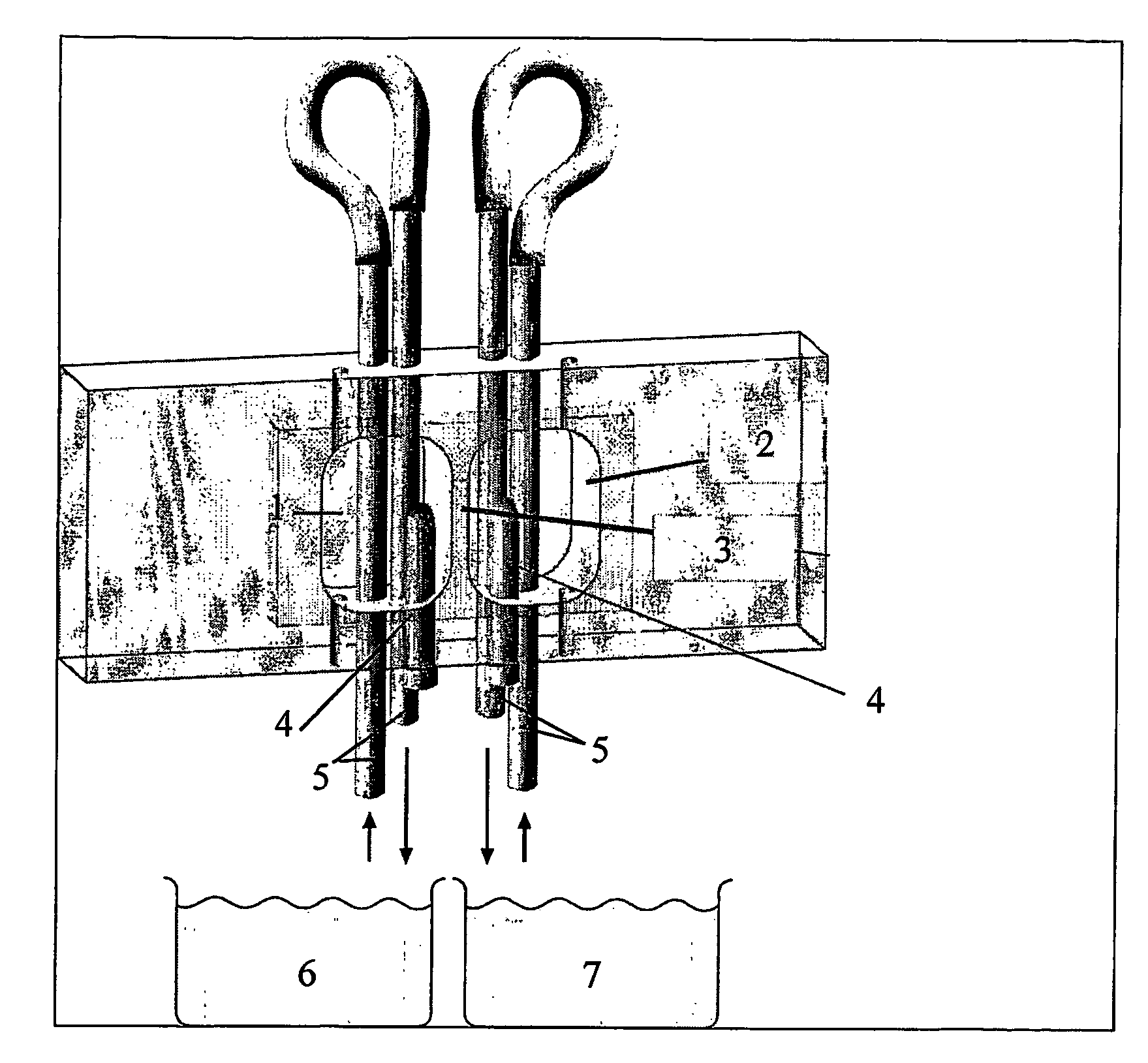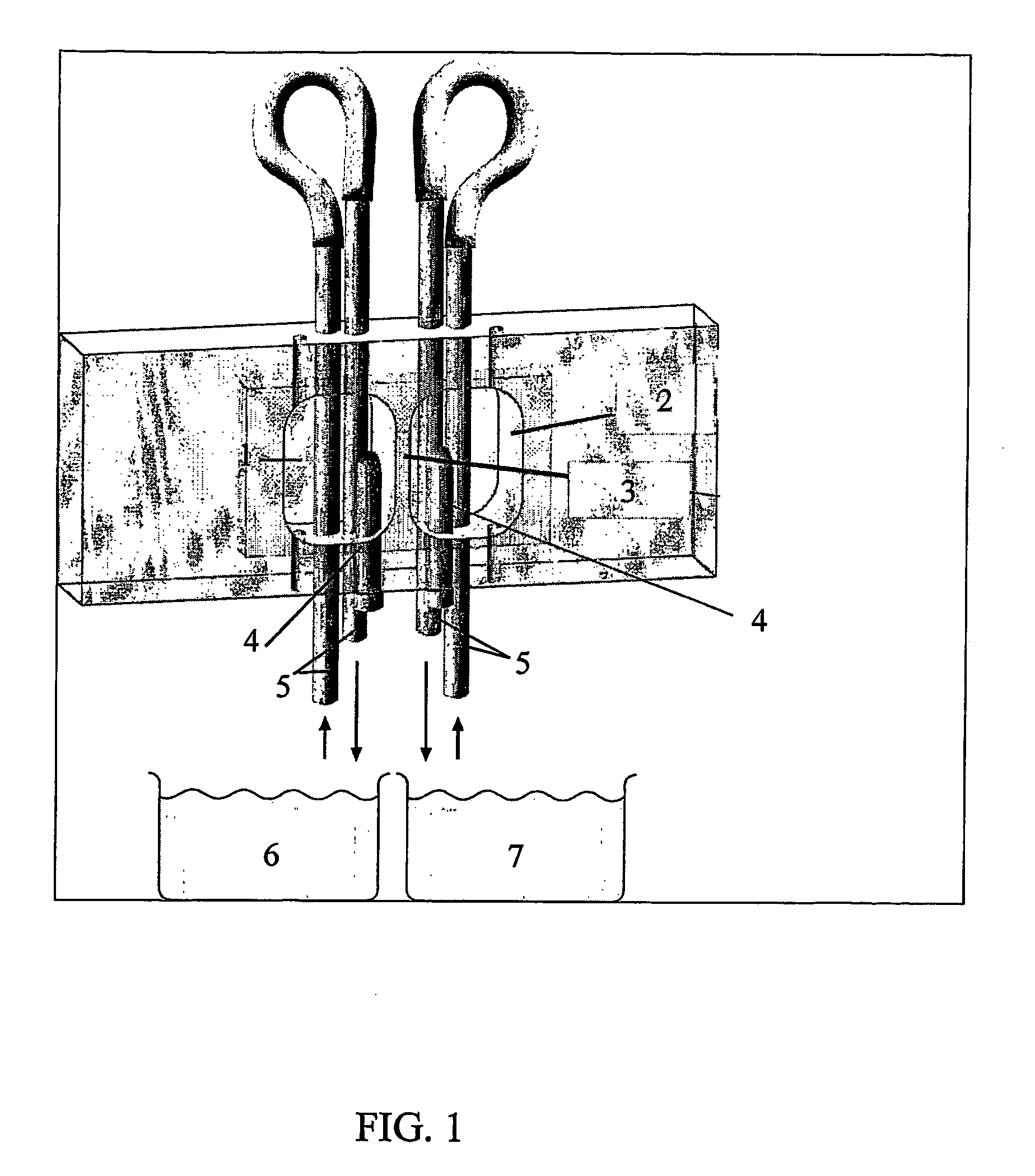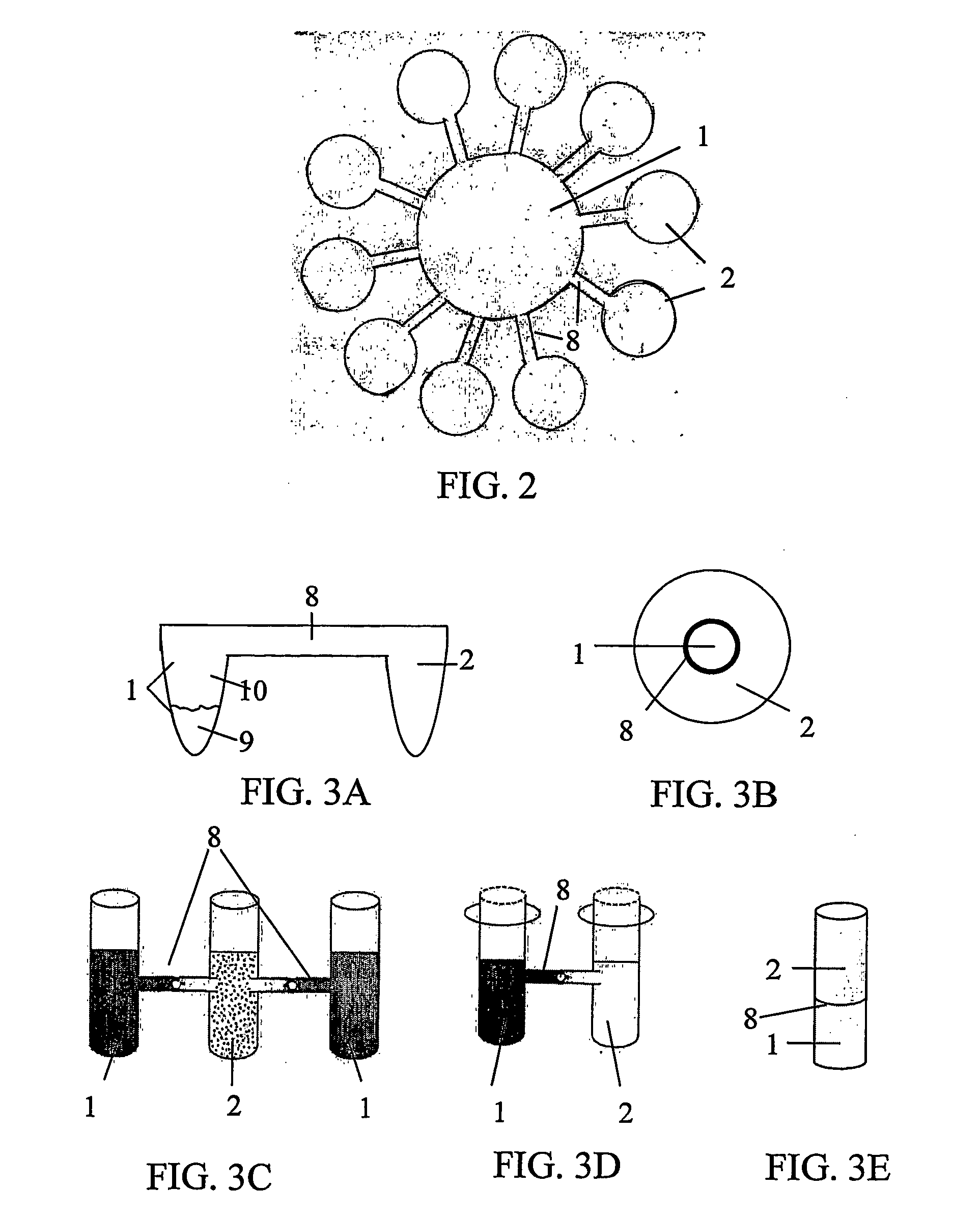Apparatus and Methods For Selecting Capacitated Spermatozoa and Uses Thereof
a technology of spermatozoa and apparatus, applied in the field of apparatus and methods for selecting capacitated spermatozoa, to achieve the effects of preserving sperm motility, advantageous functionality, and improving sperm quality
- Summary
- Abstract
- Description
- Claims
- Application Information
AI Technical Summary
Benefits of technology
Problems solved by technology
Method used
Image
Examples
example 1
Temperature Measurement at the Oviduct of a Rabbit
[0123]Temperatures within the oviduct were measured using two thermistor probes, 0.5 mm in width and 30 cm in length, connected to two digital thermometers (±0.2° C. accuracy). Temperature was measured under anesthesia at three sites: the isthmus (near the uteri-isthmic junction), the isthmic-ampullary junction, and, as a control for body temperature, the rectum. The measurement at the rectum was required in order to evaluate temperature loss due to anesthesia and due to the open abdomen. All measurements were carried out at ovulation (10.5-11.0 h post-mating). The temperatures in the isthmus and the isthmic-ampullary junction were as follows: 3.1±0.4° C. and −1.5±0.8° C. (mean±SD of 4 oviducts), respectively, relative to the rectal temperature. These results confirmed the published ˜2° C. difference between the storage and fertilization sites and further suggested that this difference is achieved by a reduced temperature at the spe...
example 2
Thermotactic Response Measurements in Capacitated Spermatozoa
[0124]A directionality-based assay, independent of the spermatozoa's speed and pattern of movement for the measurement of thermotaxis was employed (Fabro et al., Biol. Reprod. 2002, 67:1565-71). For this purpose a modified Zigmond chamber consisting of two parallel wells separated by a partition wall was used (FIG. 1 and FIG. 4; Bahat et al., ibid). The temperature in each well could be accurately controlled and measured (±0.2° C.). An equal concentrations of rabbit spermatozoa (pre-incubated for 14-18 hours under capacitating conditions) was added to each well and the tracks of the spermatozoa movement on top of the partition wall was monitored and recorded. Thermotaxis was then analyzed using a computerized motion analysis system, based on three directionality parameters: a mean net distance traveled along the temperature gradient (termed: average ΔX), percentage of cells whose net distance of traveling was towards the w...
example 3
Thermotactic Response Measurements in Non-Capacitated Spermatozoa
[0135]In the above example it was demonstrated that only a fraction of the spermatozoa are thermotactically responsive, as is the situation in sperm chemotaxis, where only a fraction of the sperm-population, the fraction of capacitated cells is responsive to the chemoattractant gradient. To determine whether only capacitated cells are thermotactically responsive the thermotactic responsiveness of spermatozoa was studied, 1 h post-ejaculation. The thermotactic responsiveness was measured in spermatozoa that did not undergo 14-18 h pre-incubation (rabbit spermatozoa become capacitated only after a long delay of about 10 hours of incubation under capacitating conditions). Under these conditions, no capacitated cells were detected as compared to 15.7±2.6% (±SEM) capacitated cells in spermatozoa that were pre-incubated under capacitating conditions for 16 h. The level of capacitated spermatozoa was determined from the diffe...
PUM
 Login to View More
Login to View More Abstract
Description
Claims
Application Information
 Login to View More
Login to View More - R&D
- Intellectual Property
- Life Sciences
- Materials
- Tech Scout
- Unparalleled Data Quality
- Higher Quality Content
- 60% Fewer Hallucinations
Browse by: Latest US Patents, China's latest patents, Technical Efficacy Thesaurus, Application Domain, Technology Topic, Popular Technical Reports.
© 2025 PatSnap. All rights reserved.Legal|Privacy policy|Modern Slavery Act Transparency Statement|Sitemap|About US| Contact US: help@patsnap.com



